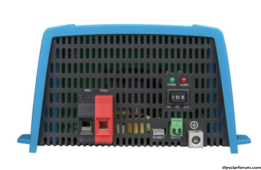hotcoldsummer
New Member
I've read about 10 threads on this but still can't find a really clear answer.
I'm installing a Victron 12/500 inverter in my teardrop and as there's already a neutral-ground bond in the connection between the DC negative bus bar and the chassis, I should leave the inverter set to floating ground and also connect it's ground to the chassis, correct?
Is it ok to ground to chassis by connecting it to the ground bus bar in the AC side of my WFCO power center, as its already grounded to the chassis? This would allow me to avoid drilling another hole in the floor.
Also, if I wanted to install an outlet, I'm assuming I should install a GFCI receptacle as opposed to something like this?

I'm installing a Victron 12/500 inverter in my teardrop and as there's already a neutral-ground bond in the connection between the DC negative bus bar and the chassis, I should leave the inverter set to floating ground and also connect it's ground to the chassis, correct?
Is it ok to ground to chassis by connecting it to the ground bus bar in the AC side of my WFCO power center, as its already grounded to the chassis? This would allow me to avoid drilling another hole in the floor.
Also, if I wanted to install an outlet, I'm assuming I should install a GFCI receptacle as opposed to something like this?



